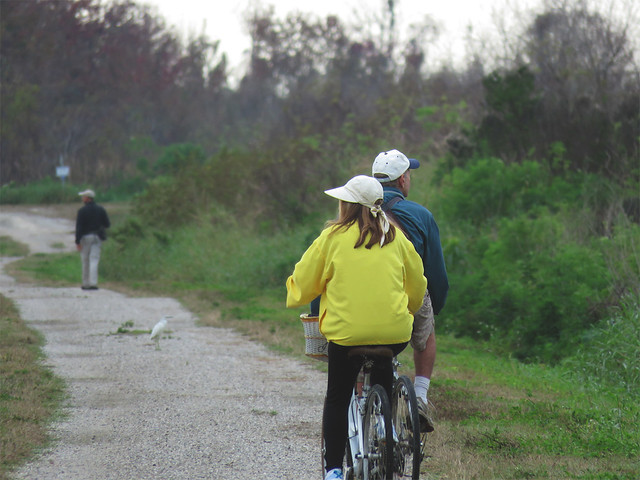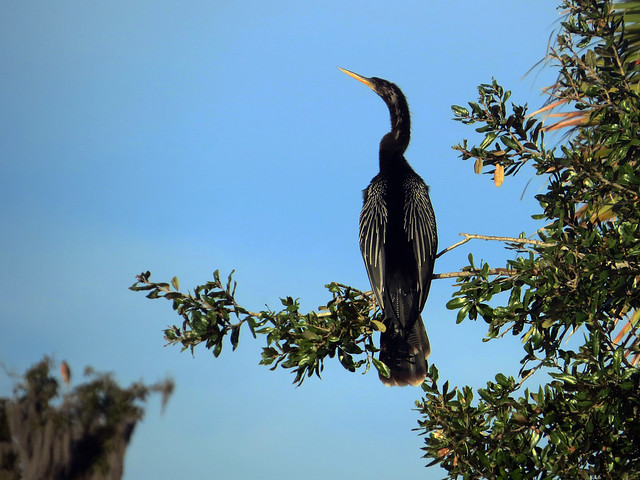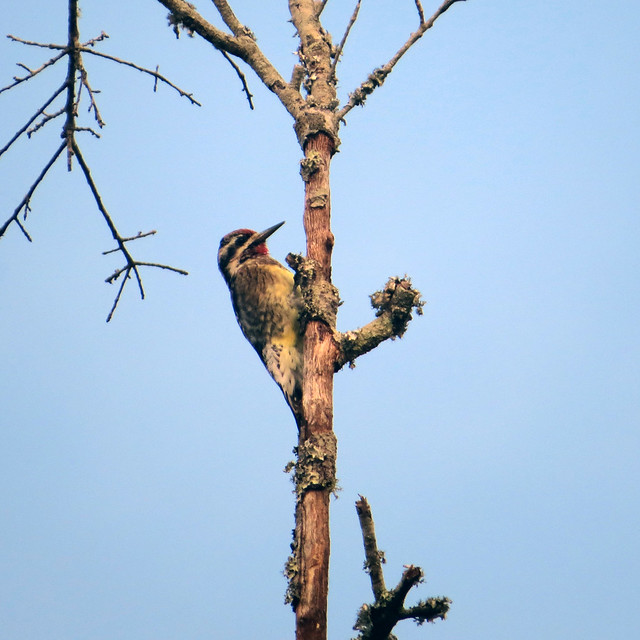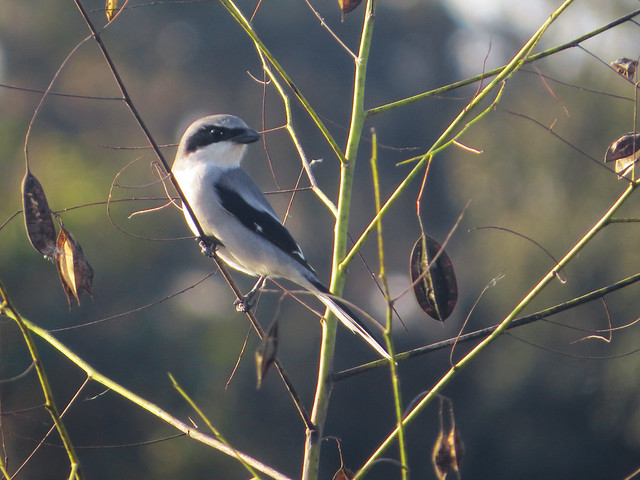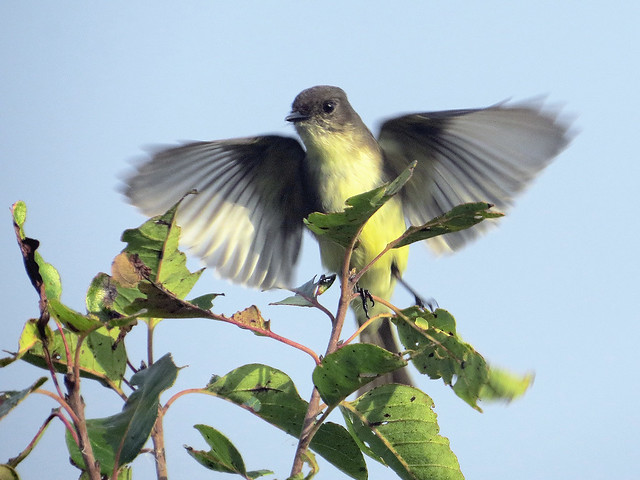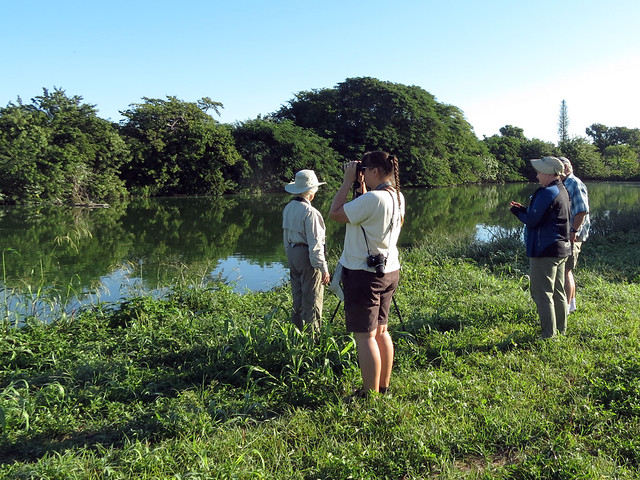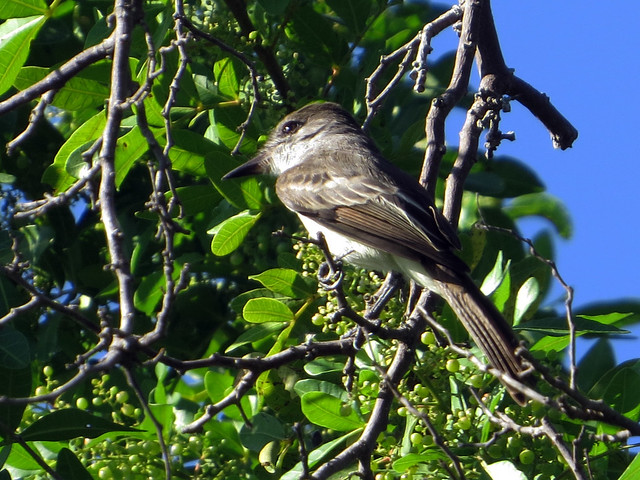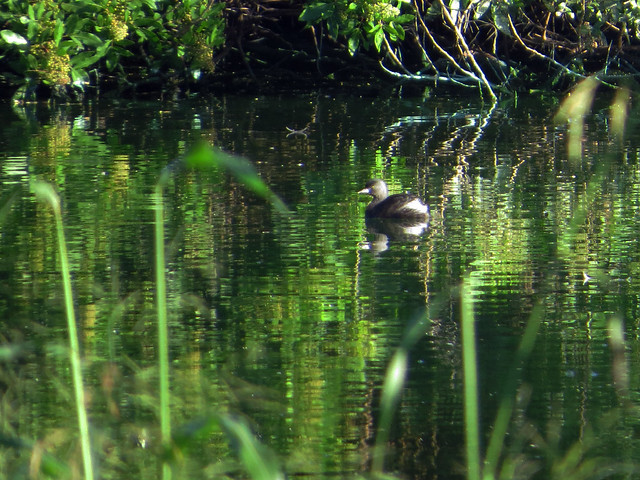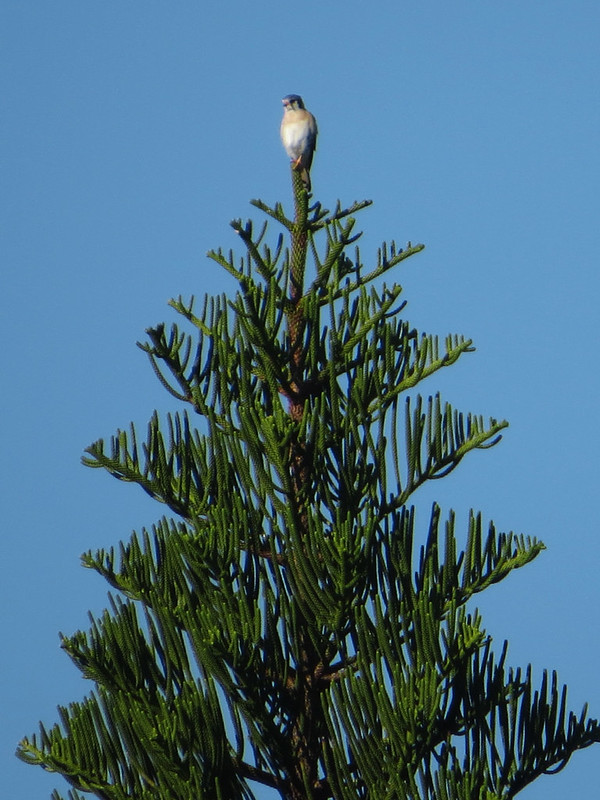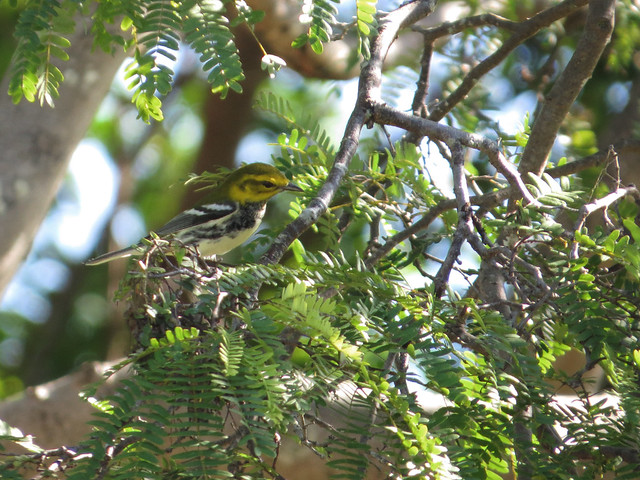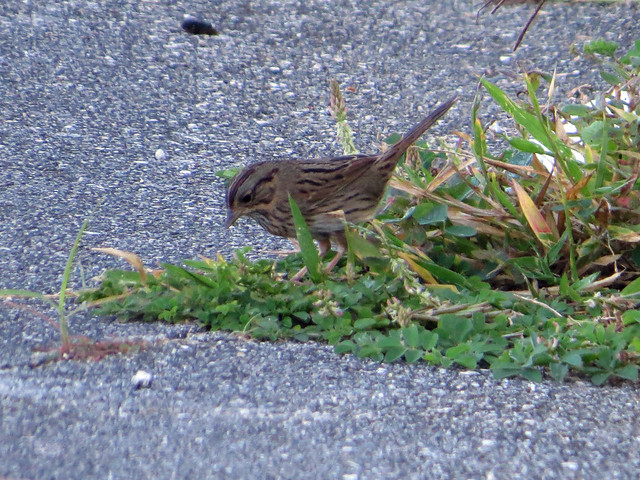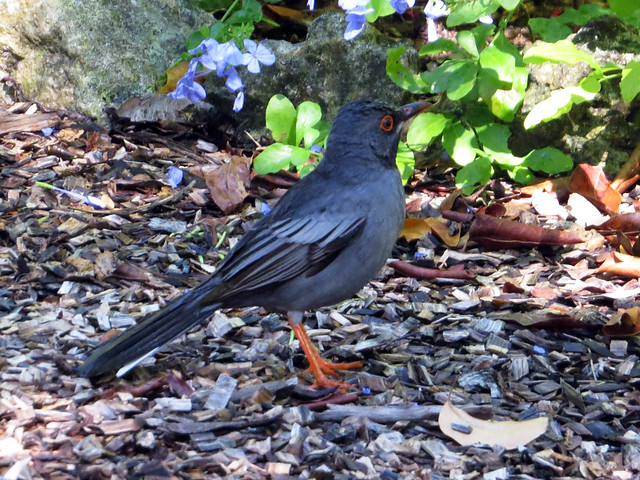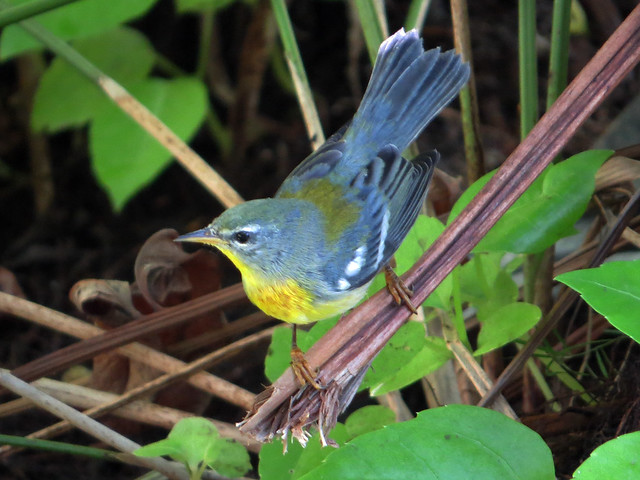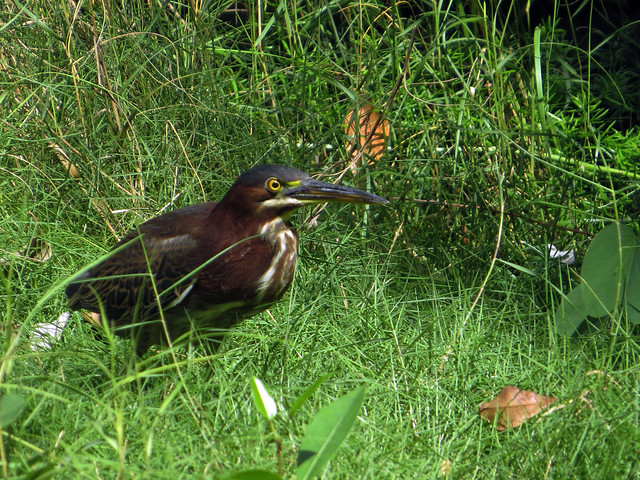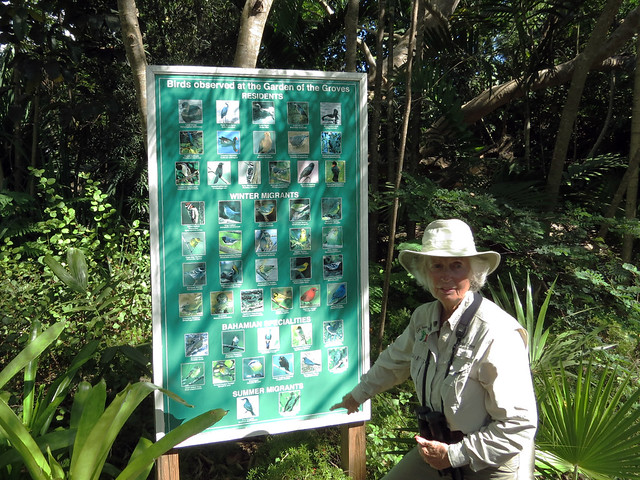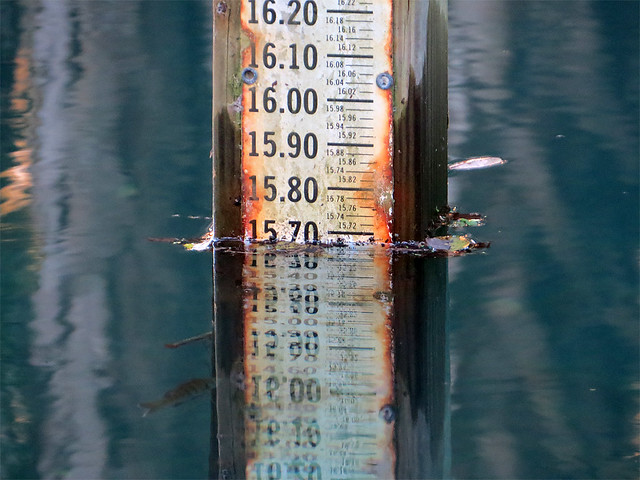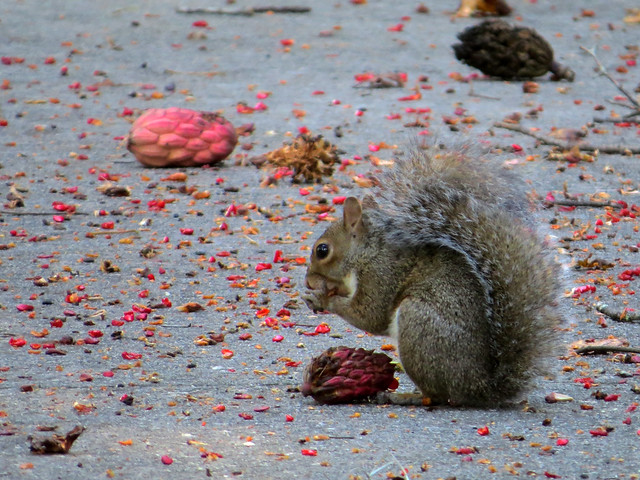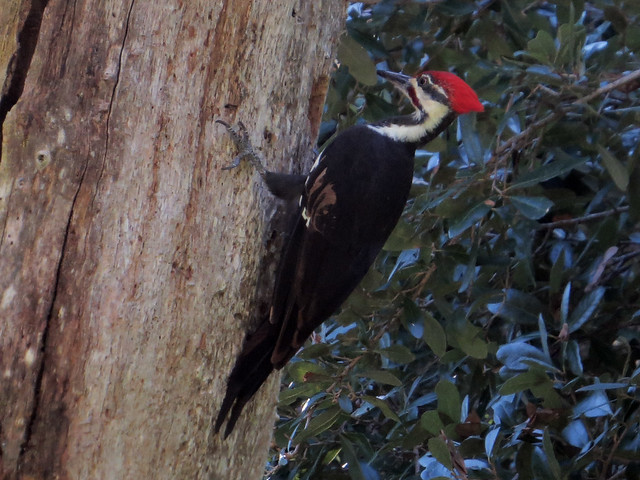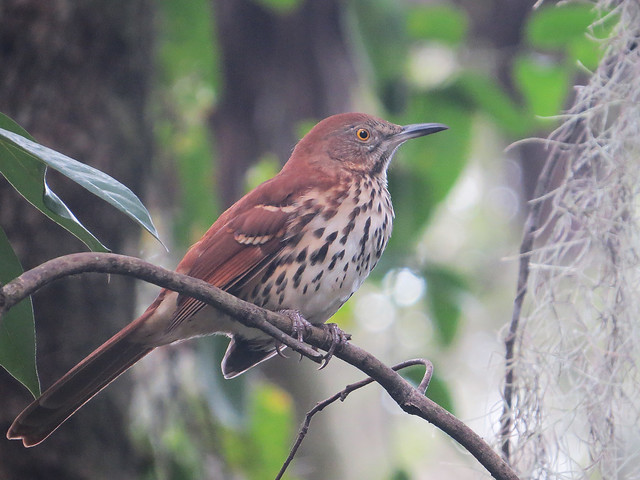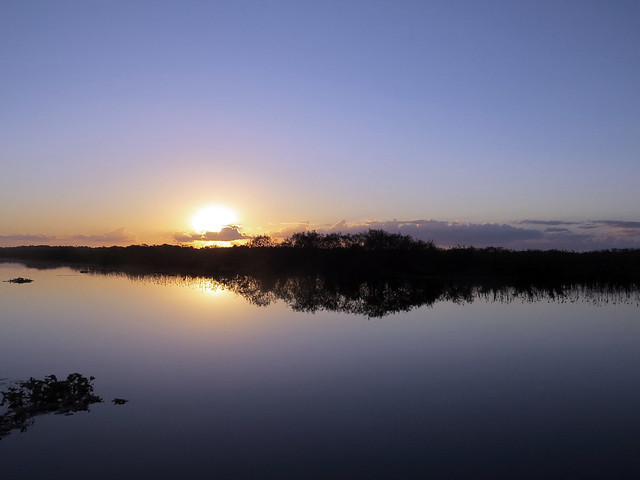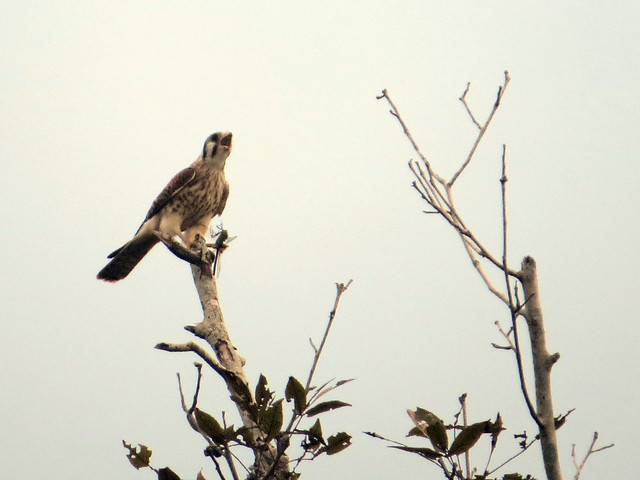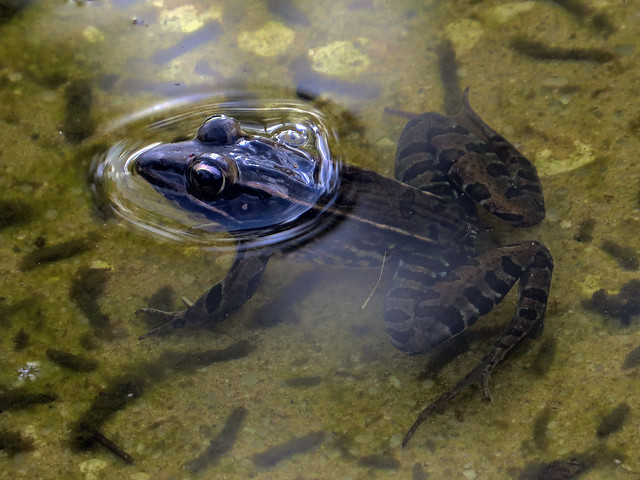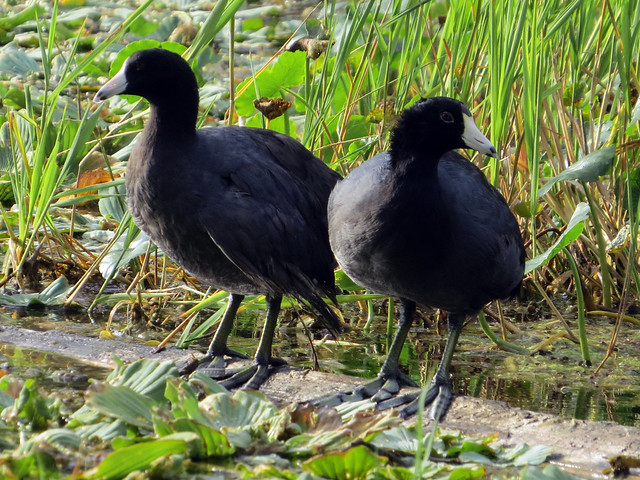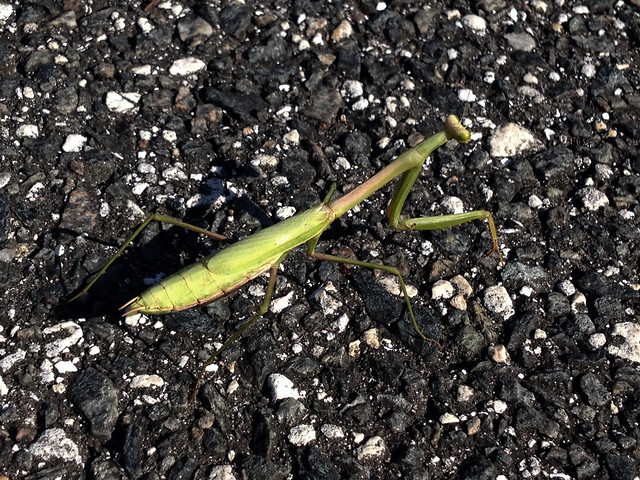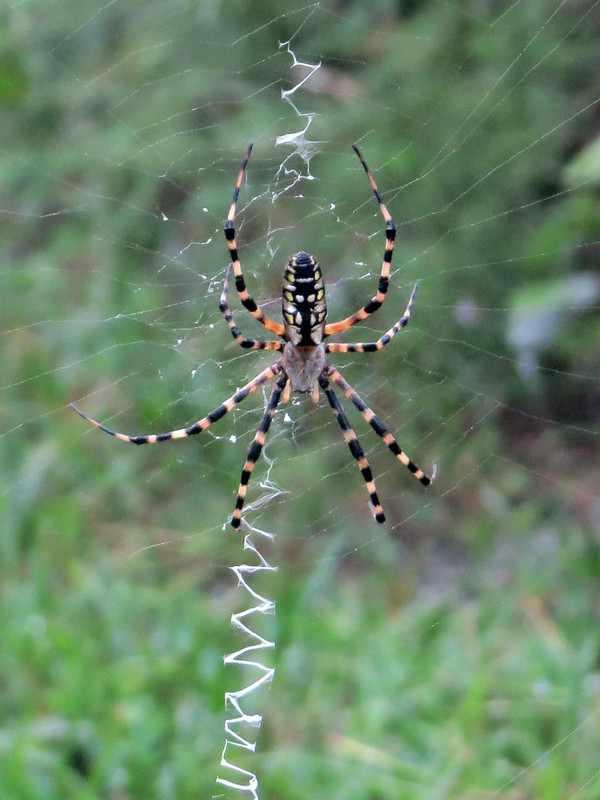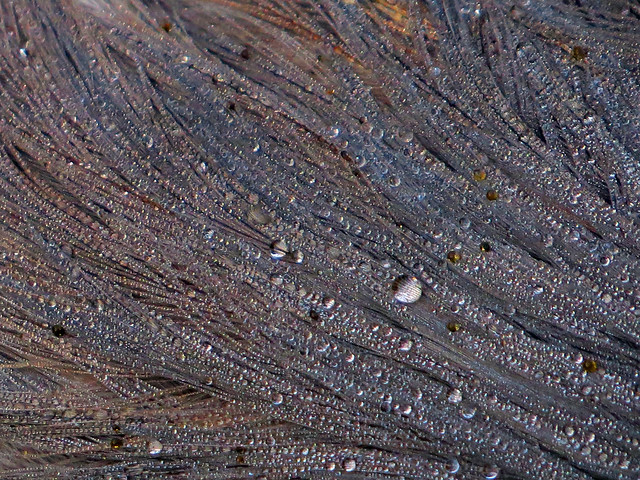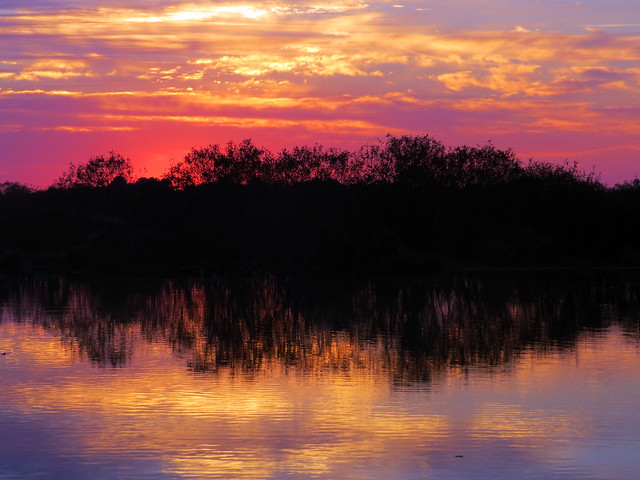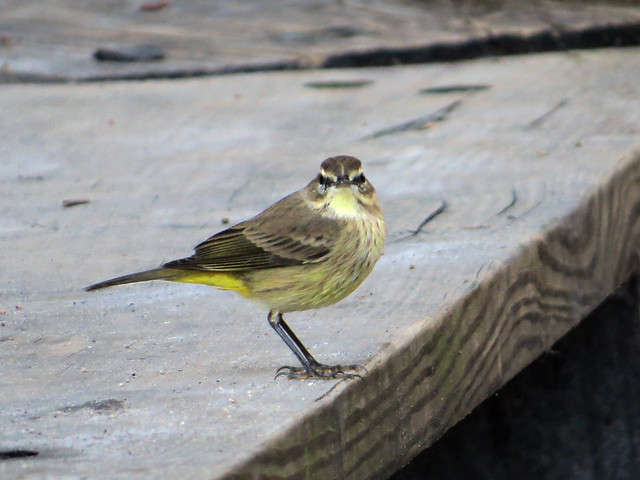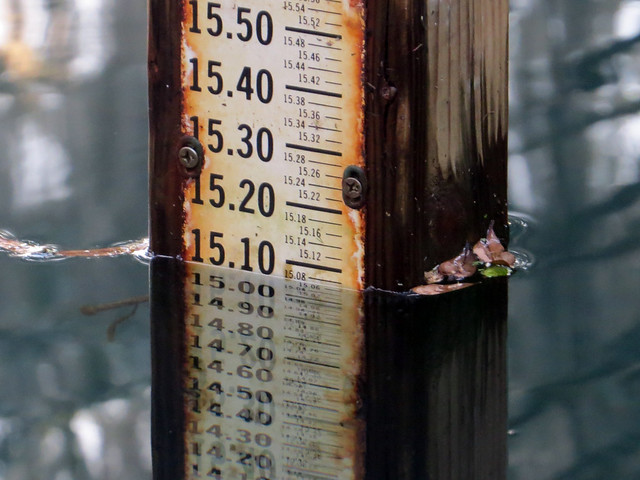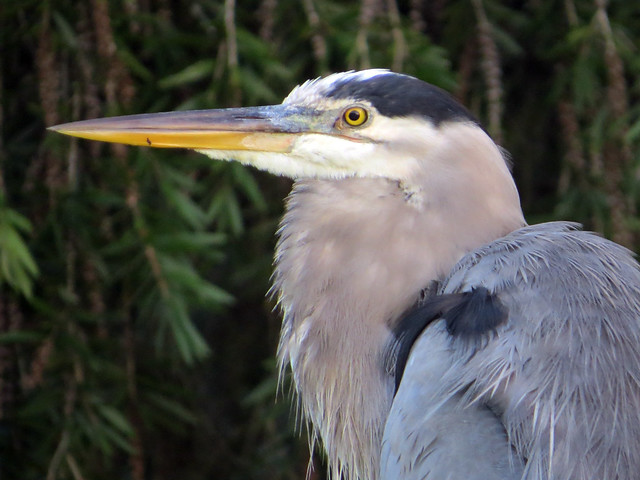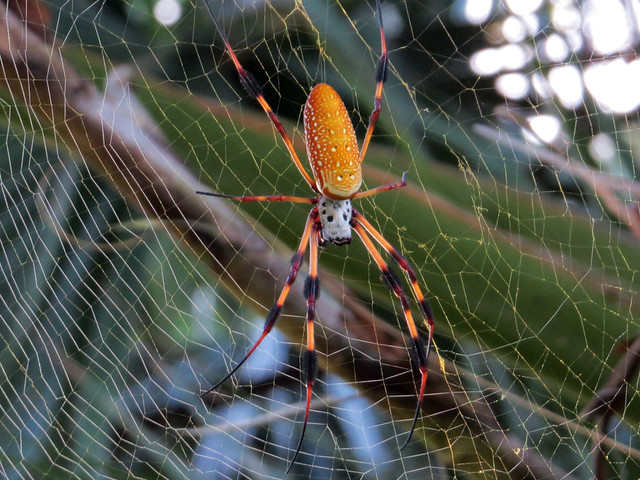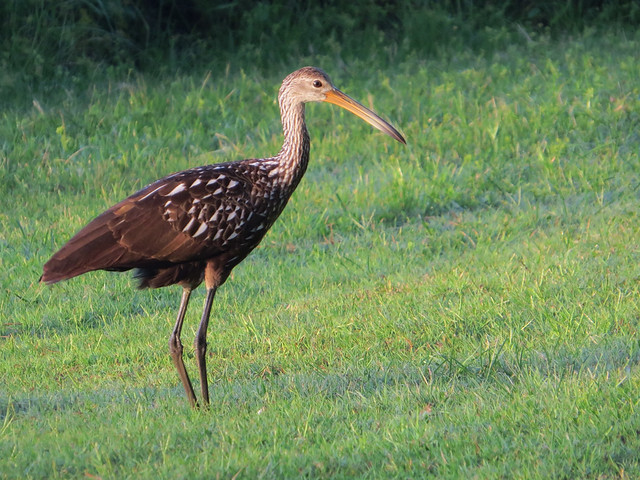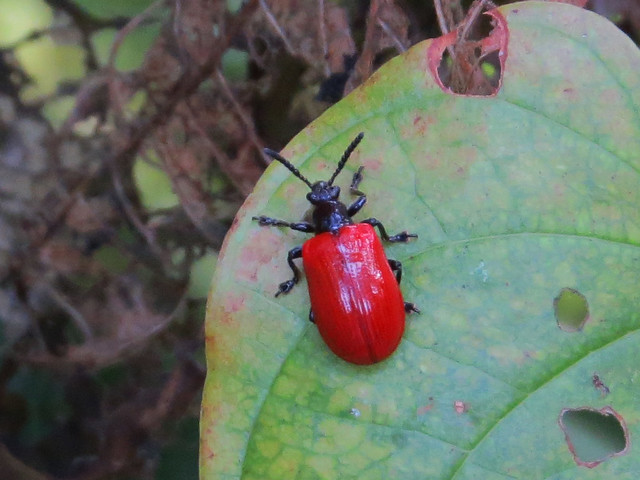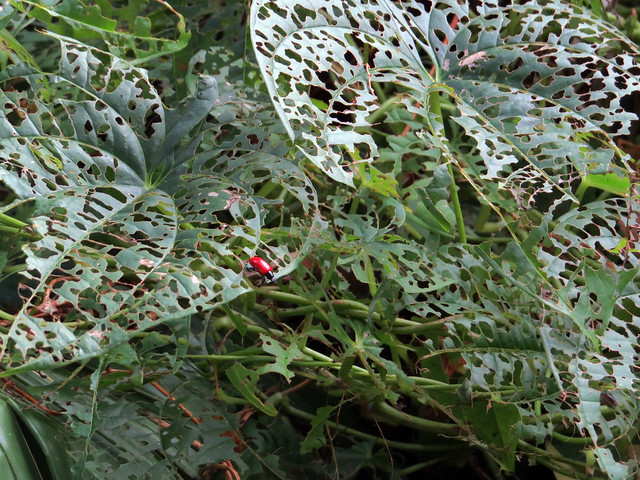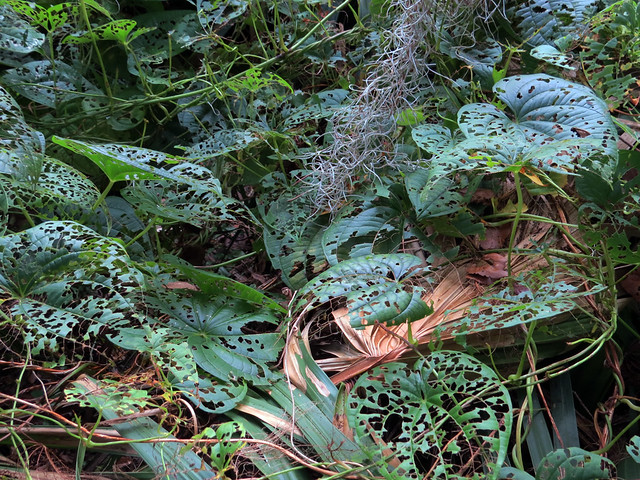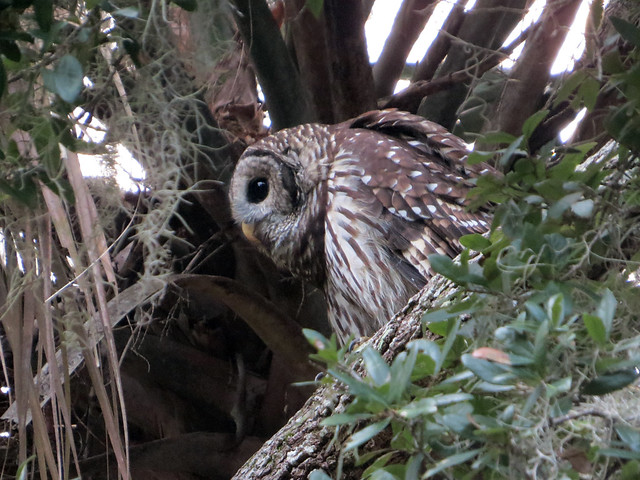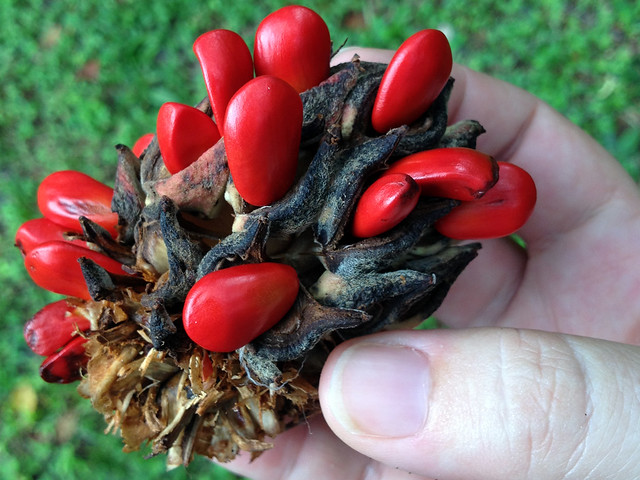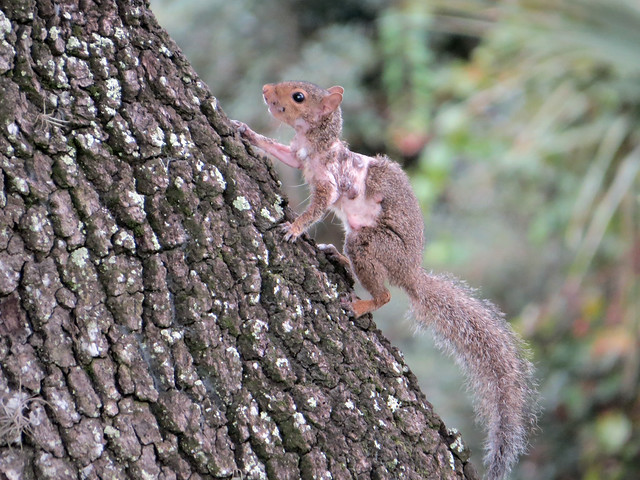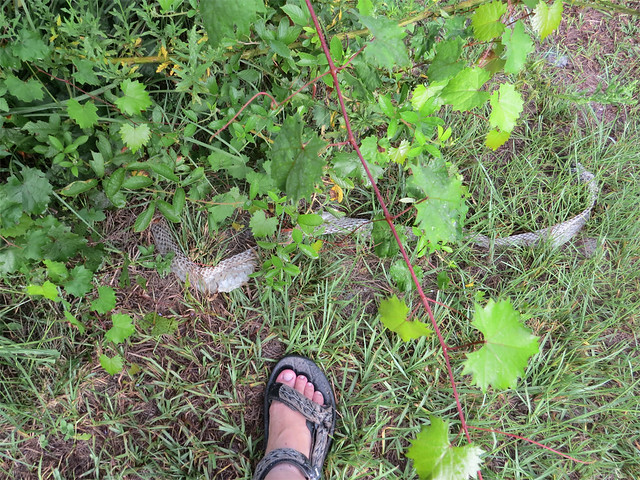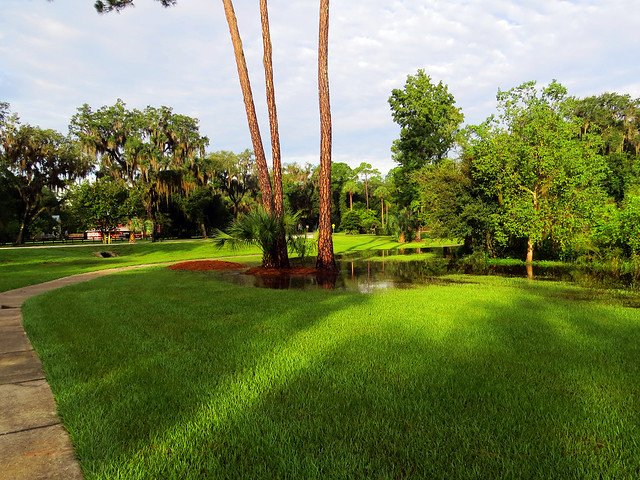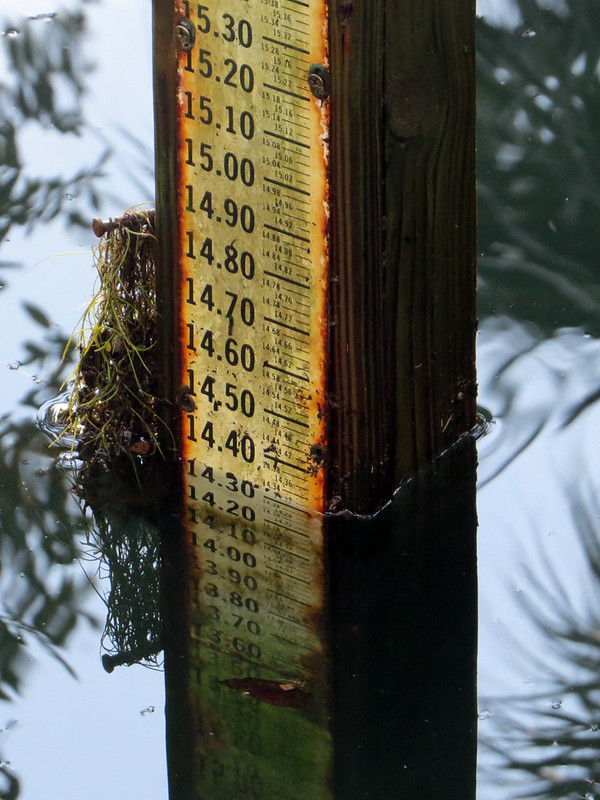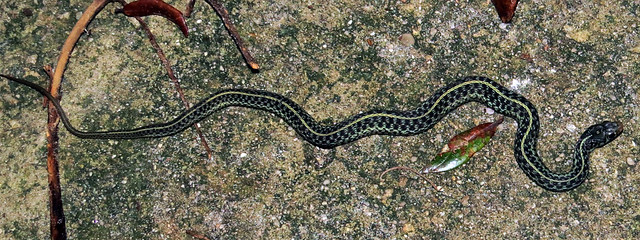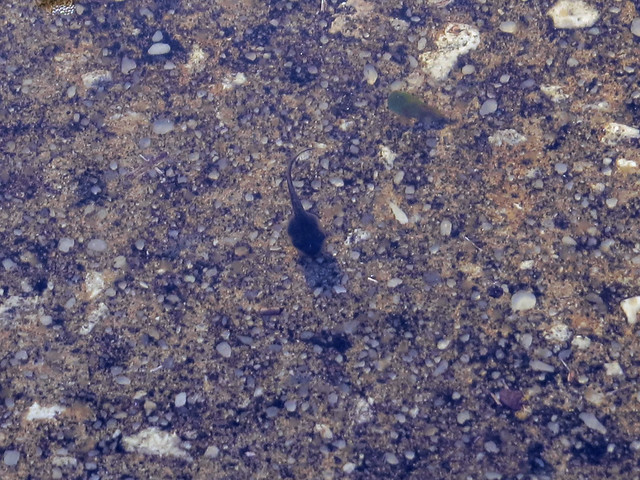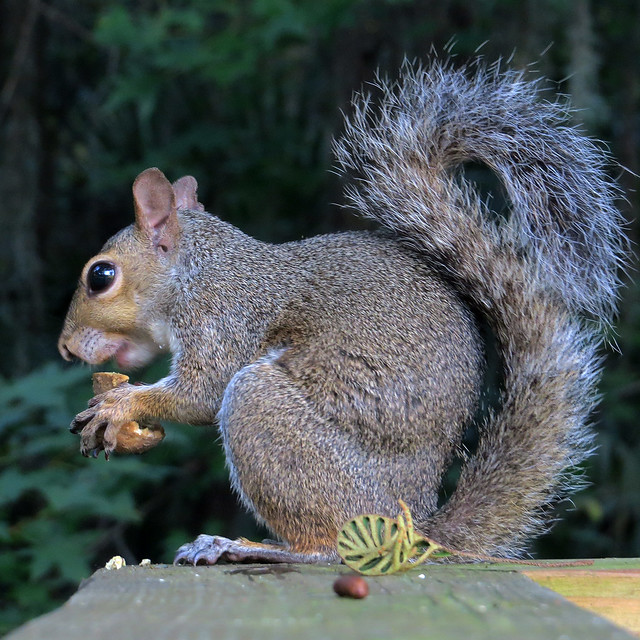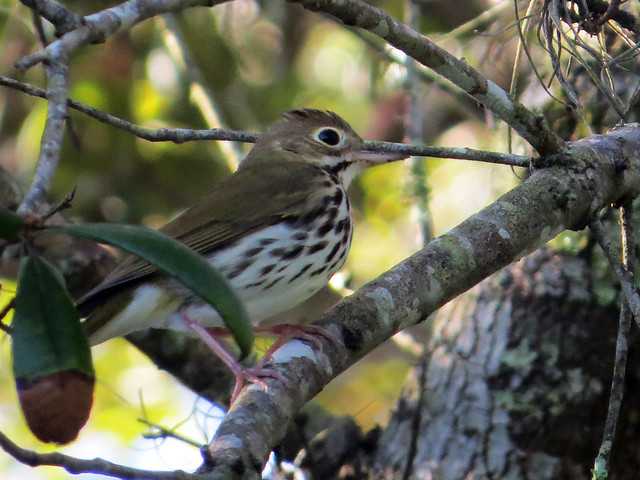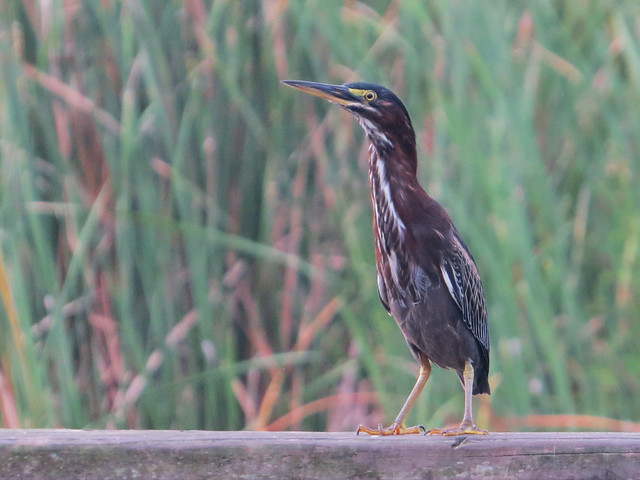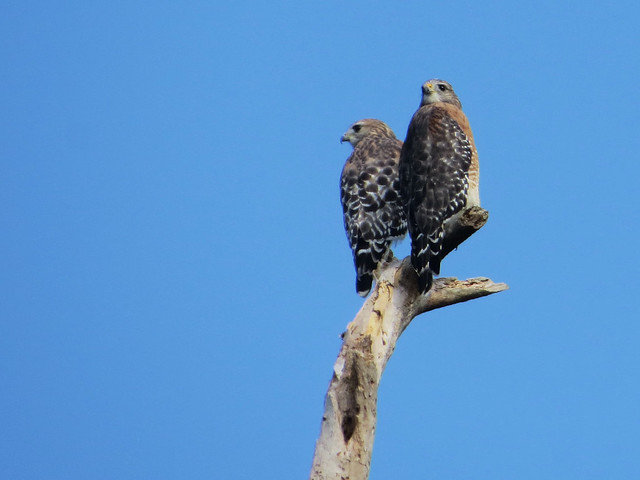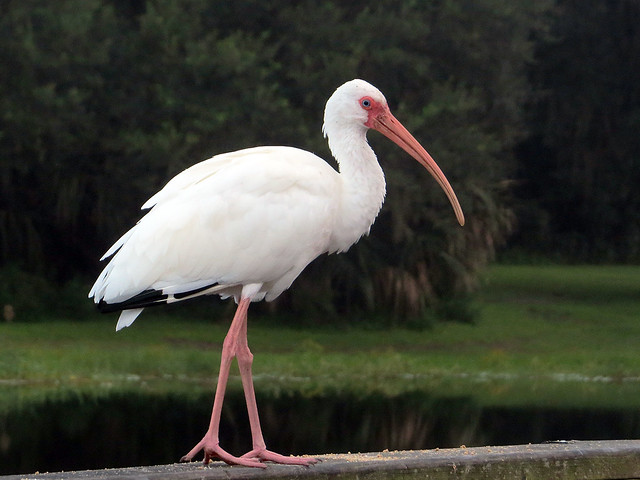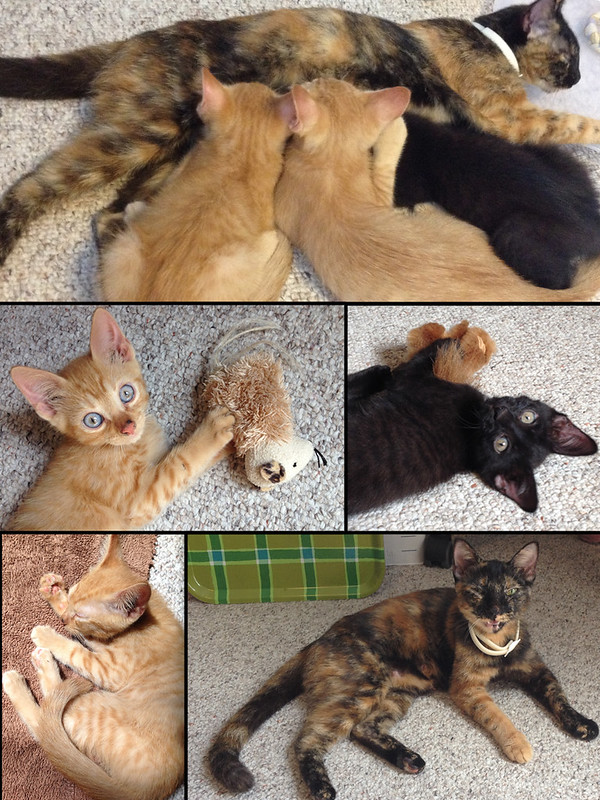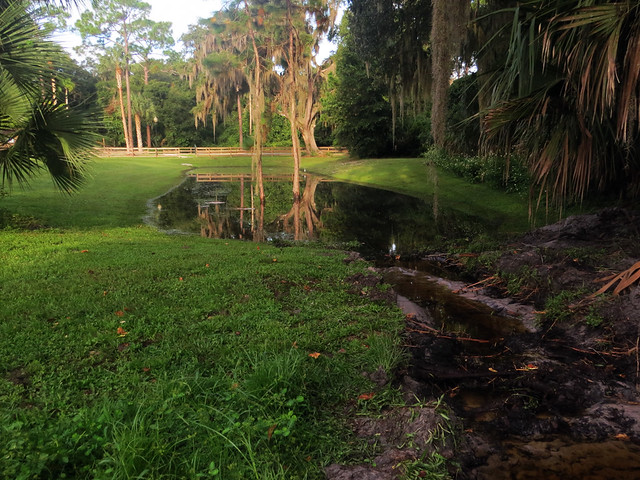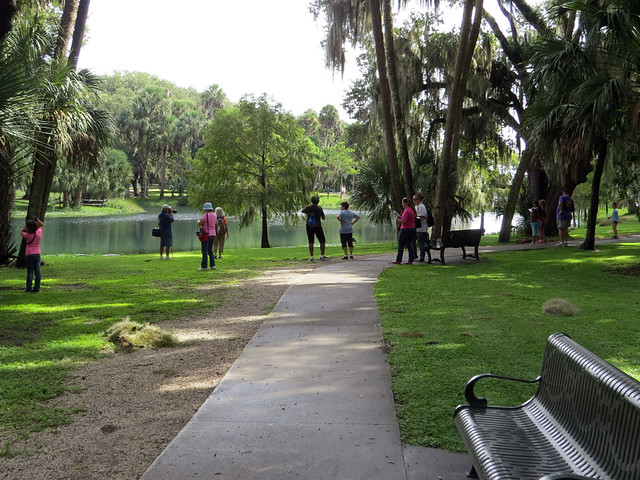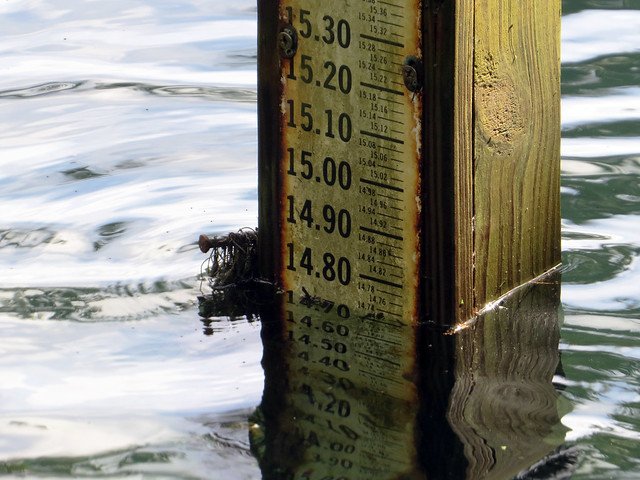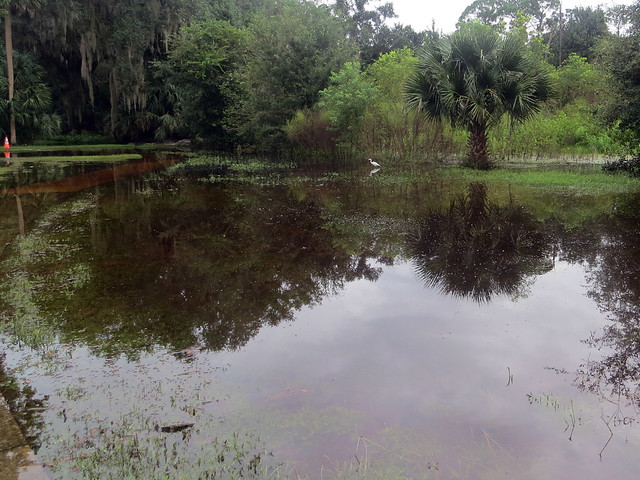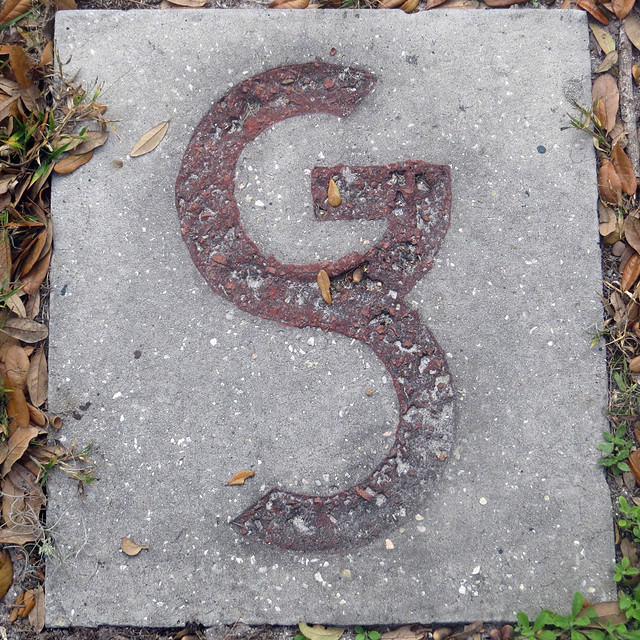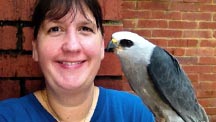Green Birding in Southwest Volusia County, January 2015
I birded at Gemini Springs 15 times last month, where I recorded 74 species. This beats my previous January totals of 70 species in 2014, 68 in 2013, and 61 in 2012. It doesn’t feel like I made 15 visits to the park in January. I hope I can kind of keep it up, because I’d like to complete the February eBirder of the Month Challenge again. The challenge is the same as last February: complete 20 checklists at a patch. Last year I actually got a little bit sick of the same old same old at Gemini Springs day after day. Hopefully 20 lists in February will fly by like the 15 I did in January! The complete list for Gemini Springs is at the end of this post.
Since I’m so interested in my green birding list, I’m going to expand these monthly reports to include other green birding that I did during the month. In January I saw a total of 90 species without the aid of fossil fuel. Besides Gemini Springs, I also visited Audubon Park in Deltona twice, plus I made stops at Lake Monroe Park in DeBary and the Lake Monroe Boat Ramp in Enterprise. I found a few more birds during on a long bike ride around Konomac Lake mid-month. And I picked up a handful of species at home, too.
Here are some photographic highlights of my January green birding in southwest Volusia County.
For Christmas Arthur and I got a set of trailers to tow our kayaks with our bikes! We took them out on January 1st for a nice paddle at Gemini Springs where we picked up some trash and got a bunch of FOY (first of year) birds from the water.

Bikes & kayaks ready to go to Gemini Springs | 01 January 2015
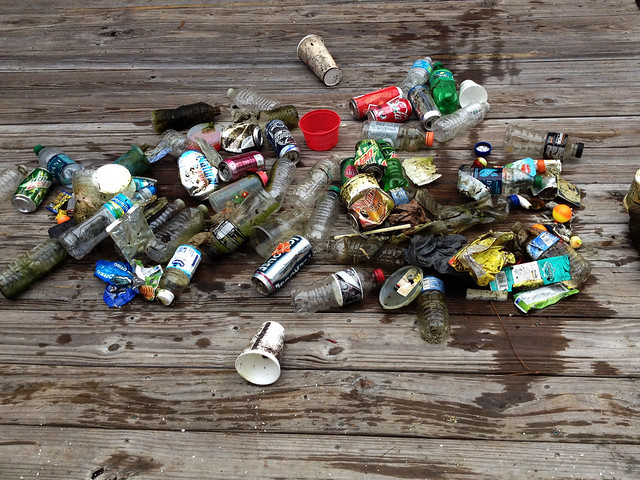
Trash picked up in DeBary Bayou at Gemini Springs | 01 January 2015

White-tailed Deer at Gemini Springs | 02 January 2015
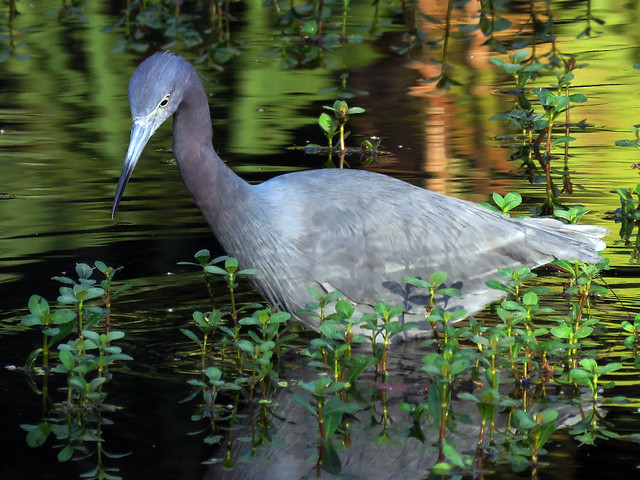
Little Blue Heron at Gemini Springs | 02 January 2015
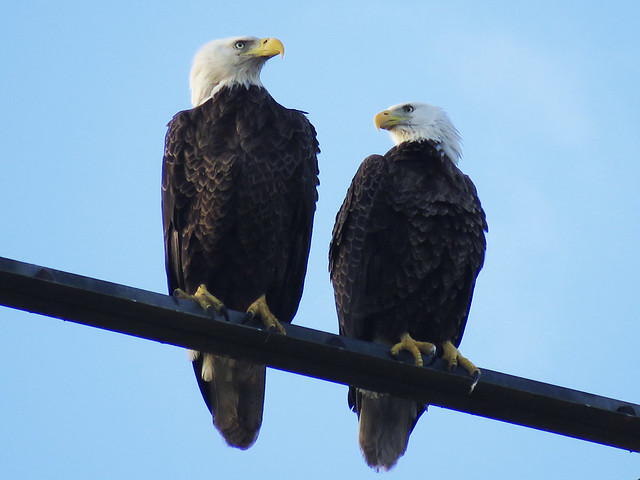
Bald Eagles at Gemini Springs | 11 January 2015

A fallen tree blocks the Spring-to-spring Trail | 11 January 2015

Red-shouldered Hawks at Gemini Springs | 12 January 2015
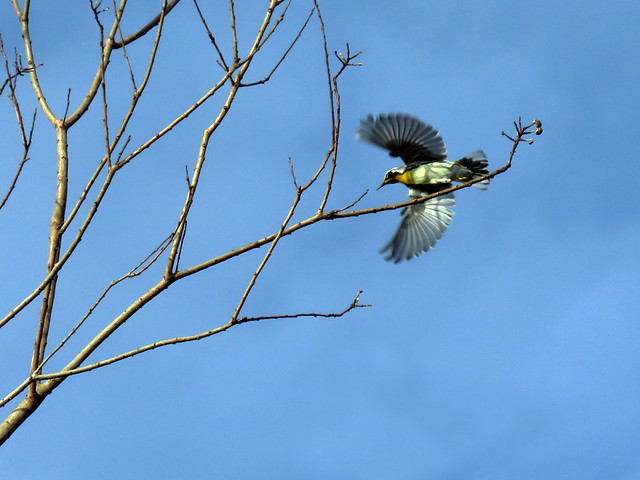
Yellow-throated Warbler at Gemini Springs | 12 January 2015

Hermit Thrush at Gemini Springs | 14 January 2015
On January 16th I joined the West Volusia Audubon walk at Audubon Park in Deltona. I was super happy to see a pair of Eastern Bluebirds there, especially since I totally missed this species on my 2014 green list.
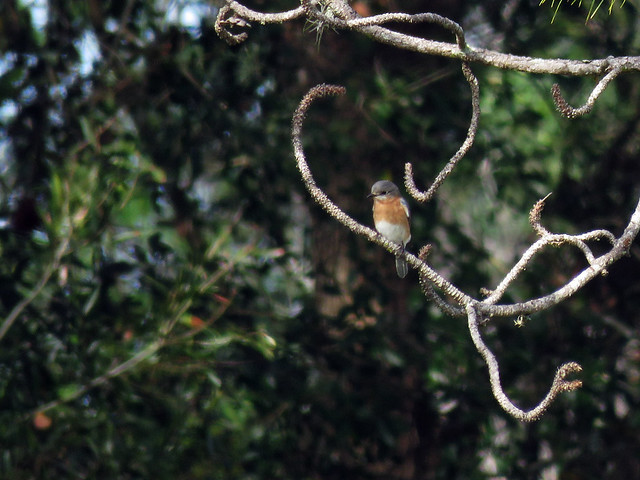
Eastern Bluebird at Audubon Park | 16 January 2015
The following photos remind me of someone we used to go birding with back in Illinois. This guy would often remark that a pair of different birds standing together were providing a “good comparison” in case people ever got them mixed up. Except he would say this, in humor, even if the birds were as different as an American Robin and a Mallard! But these two photos really are good comparison shots of two different species that people actually do often mix up. Ah, I miss that old bird club. 🙂
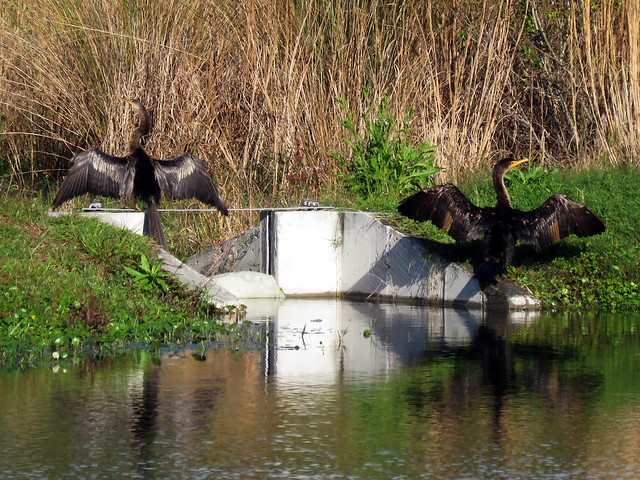
Anhinga versus Double-crested Cormorant at Audubon Park | 16 January 2015
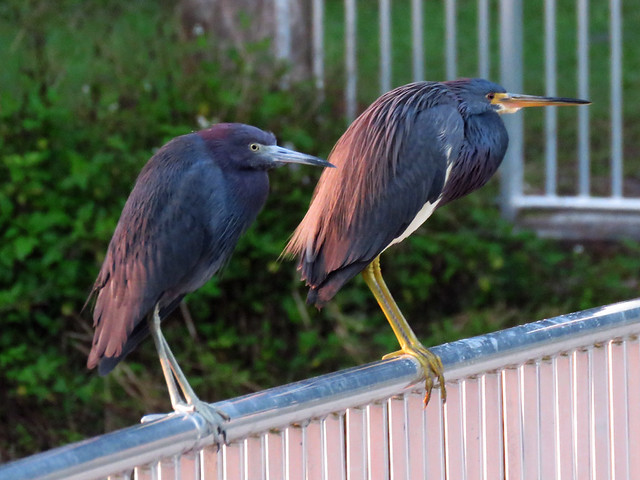
Little Blue Heron versus Tricolored Heron at Gemini Springs | 17 January 2015
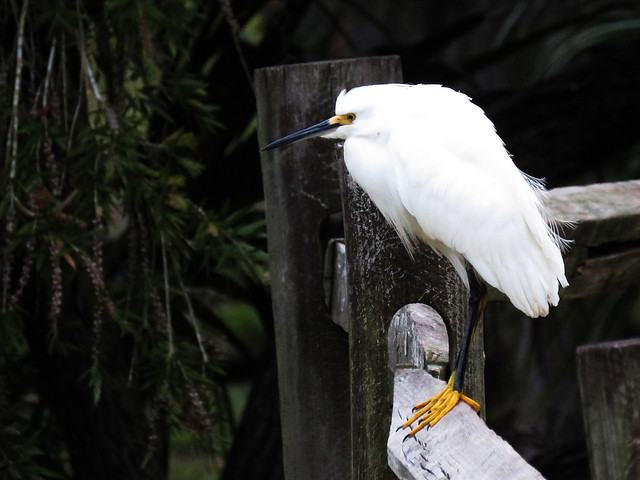
Snowy Egret at Gemini Springs | 20 January 2015

Painted Bunting in our back yard | 22 January 2015

Glossy Ibis sunrise at Gemini Springs | 23 January 2015
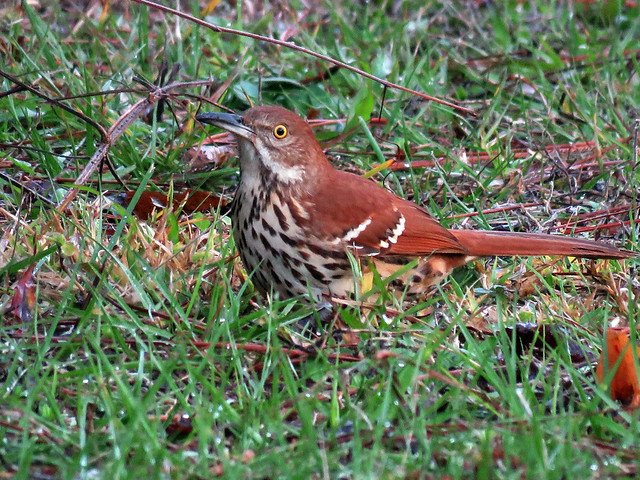
Brown Thrasher at Gemini Springs | 23 January 2015
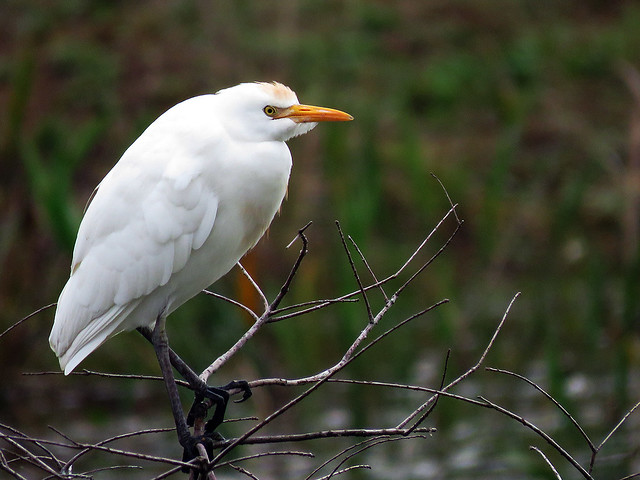
Cattle Egret at Audubon Park | 24 January 2015
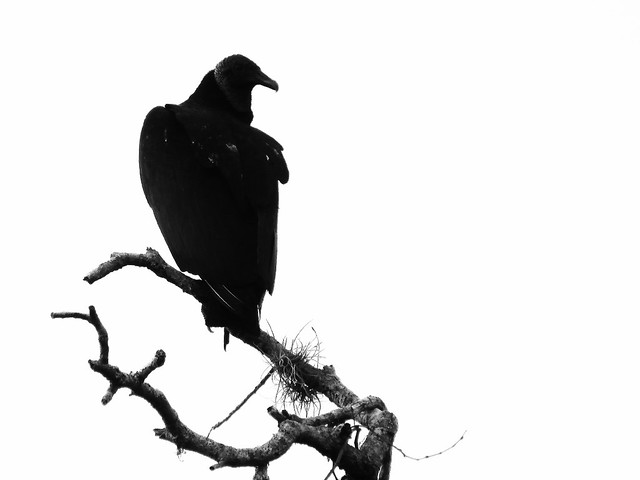
Black Vulture at Gemini Springs | 25 January 2015
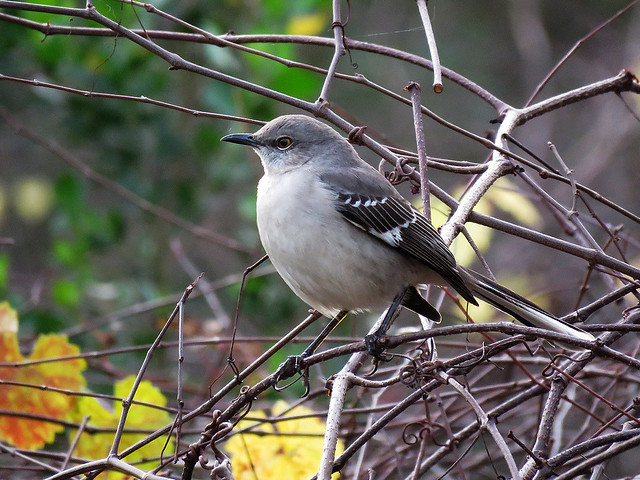
Northern Mockingbird at Gemini Springs | 25 January 2015
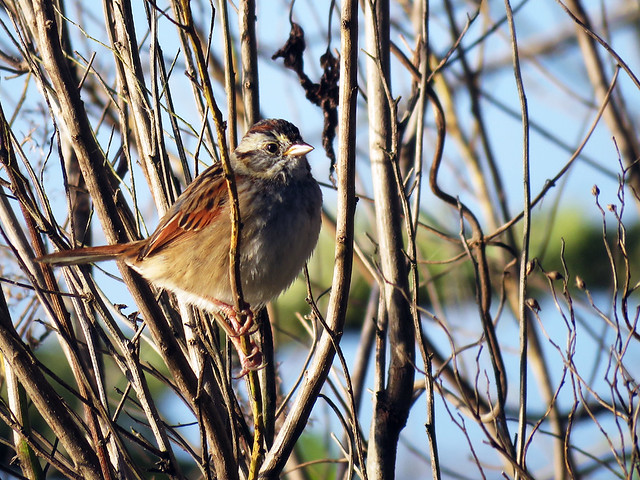
Swamp Sparrow at Gemini Springs | 26 January 2015

I’m not very smart – my mud-soaked socked foot at Gemini Springs | 26 January 2015
Gemini Springs bird list, January 2015
Blue-winged Teal – Anas discors
Hooded Merganser – Lophodytes cucullatus
Pied-billed Grebe – Podilymbus podiceps
Wood Stork – Mycteria americana
Double-crested Cormorant – Phalacrocorax auritus
Anhinga – Anhinga anhinga
American Bittern – Botaurus lentiginosus
Great Blue Heron – Ardea herodias
Great Egret – Ardea alba
Snowy Egret – Egretta thula
Little Blue Heron – Egretta caerulea
Tricolored Heron – Egretta tricolor
Cattle Egret – Bubulcus ibis
Green Heron – Butorides virescens
White Ibis – Eudocimus albus
Glossy Ibis – Plegadis falcinellus
Black Vulture – Coragyps atratus
Turkey Vulture – Cathartes aura
Osprey – Pandion haliaetus
Northern Harrier – Circus cyaneus
Cooper’s Hawk – Accipiter cooperii
Bald Eagle – Haliaeetus leucocephalus
Red-shouldered Hawk – Buteo lineatus
Red-tailed Hawk – Buteo jamaicensis
Sora – Porzana carolina
Common Gallinule – Gallinula galeata
American Coot – Fulica americana
Limpkin – Aramus guarauna
Killdeer – Charadrius vociferus
Ring-billed Gull – Larus delawarensis
Forster’s Tern – Sterna forsteri
Mourning Dove – Zenaida macroura
Barred Owl – Strix varia
Belted Kingfisher – Megaceryle alcyon
Red-bellied Woodpecker – Melanerpes carolinus
Yellow-bellied Sapsucker – Sphyrapicus varius
Downy Woodpecker – Picoides pubescens
Pileated Woodpecker – Dryocopus pileatus
American Kestrel – Falco sparverius
Eastern Phoebe – Sayornis phoebe
Loggerhead Shrike – Lanius ludovicianus
White-eyed Vireo – Vireo griseus
Blue-headed Vireo – Vireo solitarius
Blue Jay – Cyanocitta cristata
American Crow – Corvus brachyrhynchos
Fish Crow – Corvus ossifragus
Tree Swallow – Tachycineta bicolor
Tufted Titmouse – Baeolophus bicolor
House Wren – Troglodytes aedon
Carolina Wren – Thryothorus ludovicianus
Blue-gray Gnatcatcher – Polioptila caerulea
Ruby-crowned Kinglet – Regulus calendula
Hermit Thrush – Catharus guttatus
American Robin – Turdus migratorius
Gray Catbird – Dumetella carolinensis
Brown Thrasher – Toxostoma rufum
Northern Mockingbird – Mimus polyglottos
Cedar Waxwing – Bombycilla cedrorum
Black-and-white Warbler – Mniotilta varia
Orange-crowned Warbler – Oreothlypis celata
Common Yellowthroat – Geothlypis trichas
Palm Warbler – Setophaga palmarum
Pine Warbler – Setophaga pinus
Yellow-rumped Warbler – Setophaga coronata
Yellow-throated Warbler – Setophaga dominica
Prairie Warbler – Setophaga discolor
Chipping Sparrow – Spizella passerina
Savannah Sparrow – Passerculus sandwichensis
Swamp Sparrow – Melospiza georgiana
Northern Cardinal – Cardinalis cardinalis
Red-winged Blackbird – Agelaius phoeniceus
Common Grackle – Quiscalus quiscula
Boat-tailed Grackle – Quiscalus major
American Goldfinch – Spinus tristis



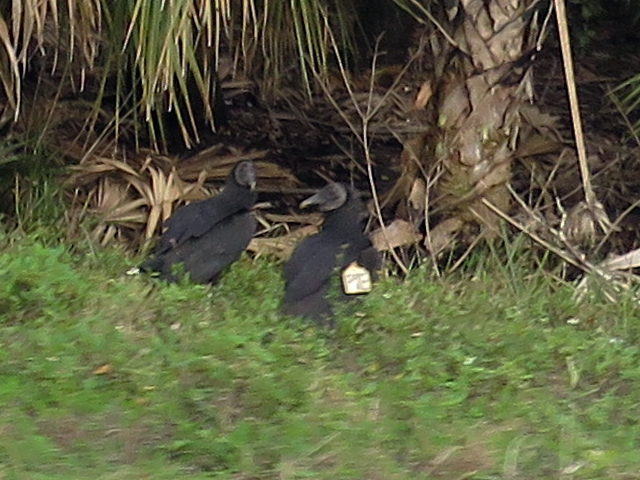
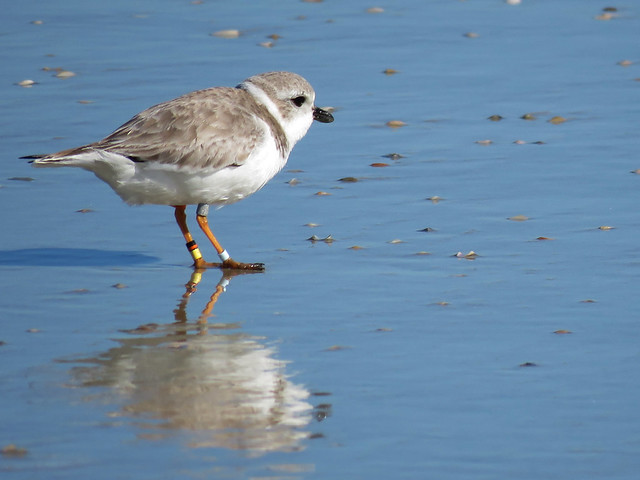
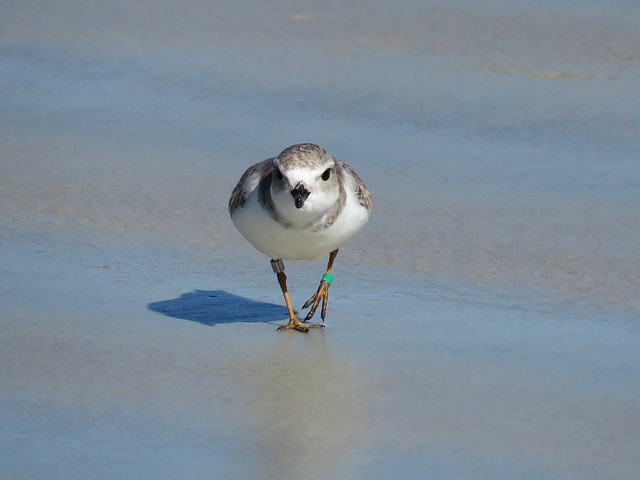
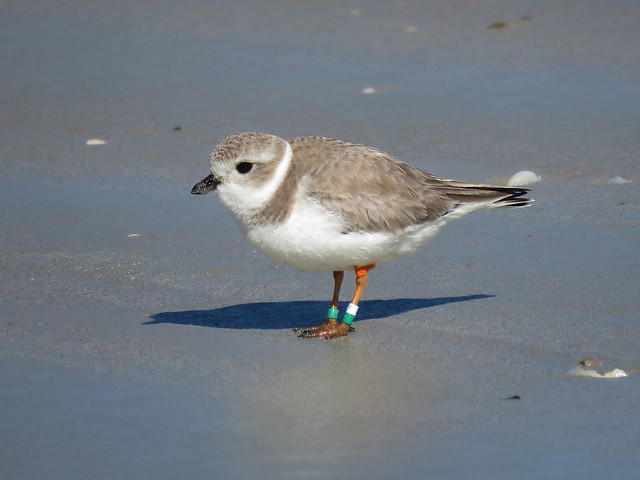
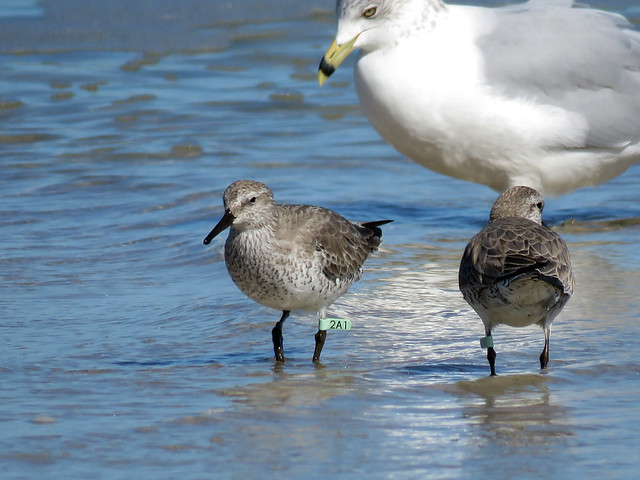
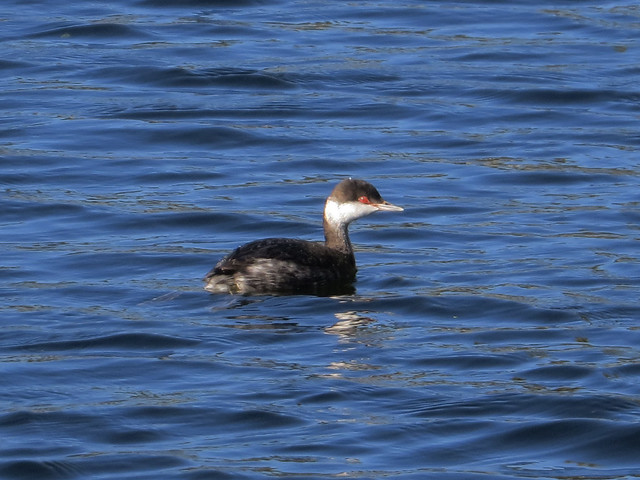


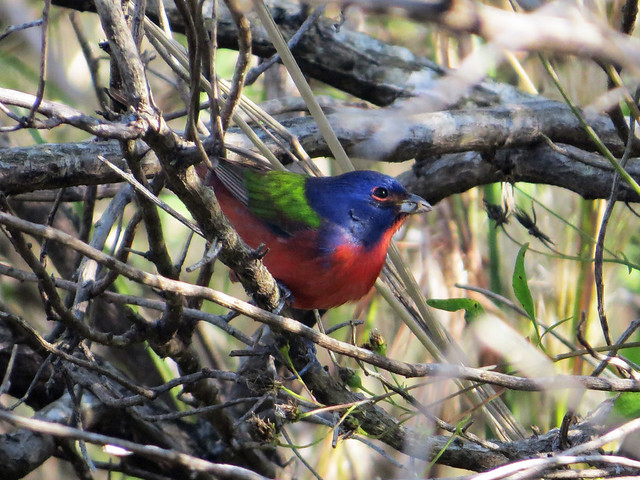
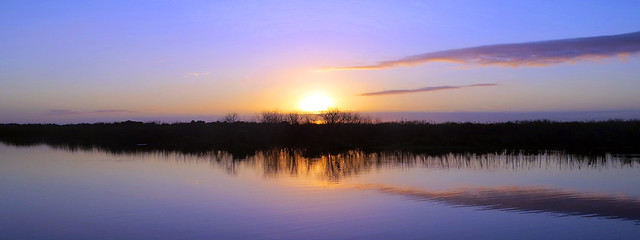
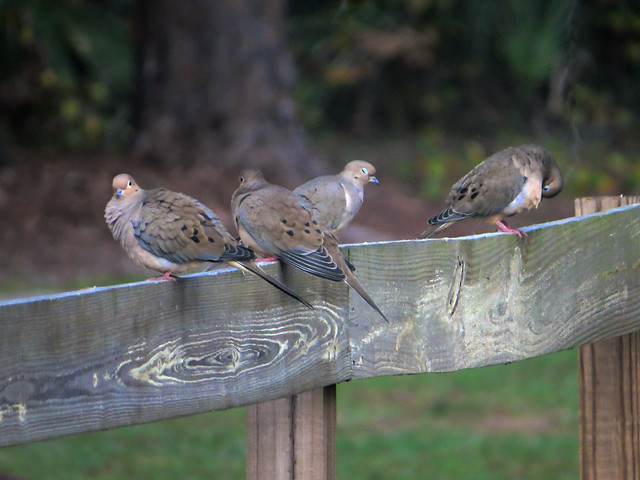
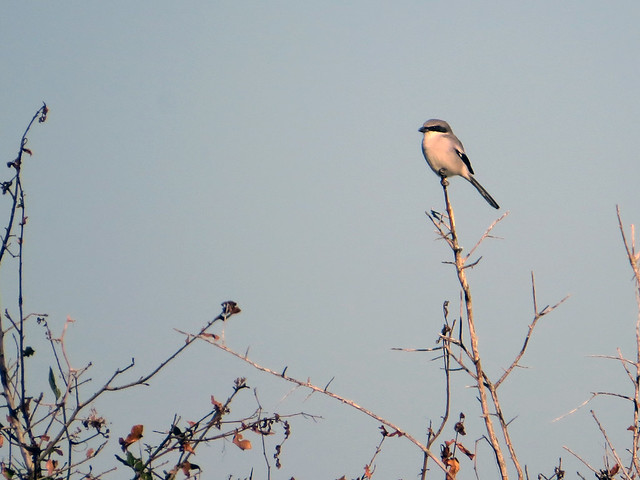
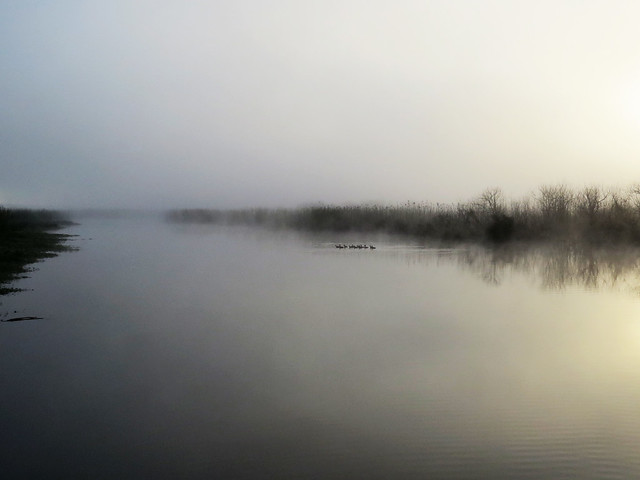

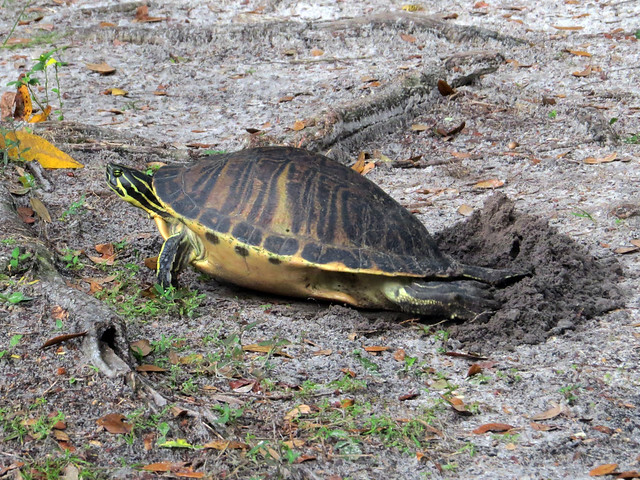



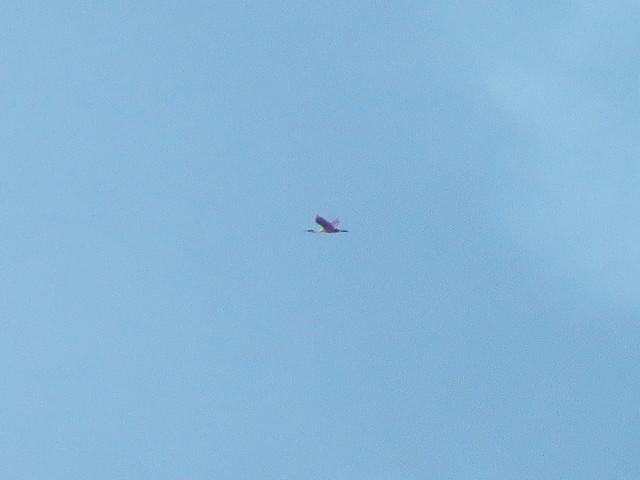

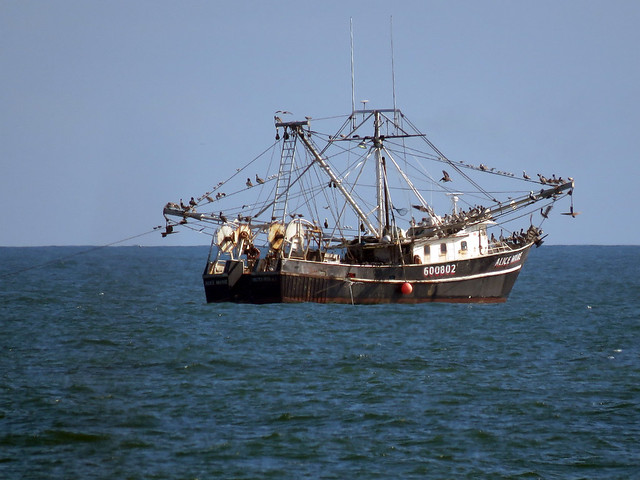
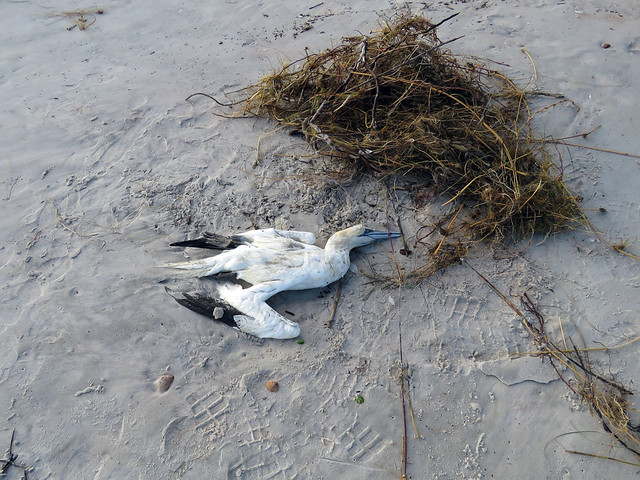
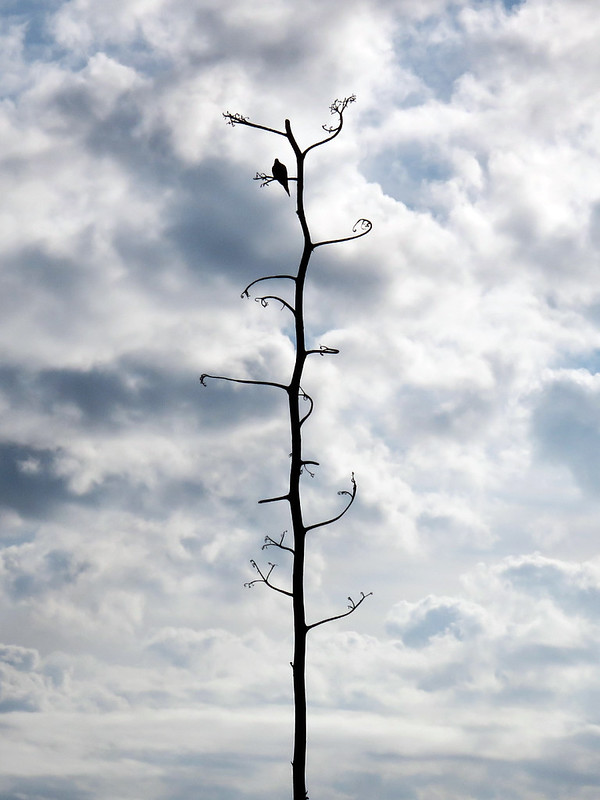
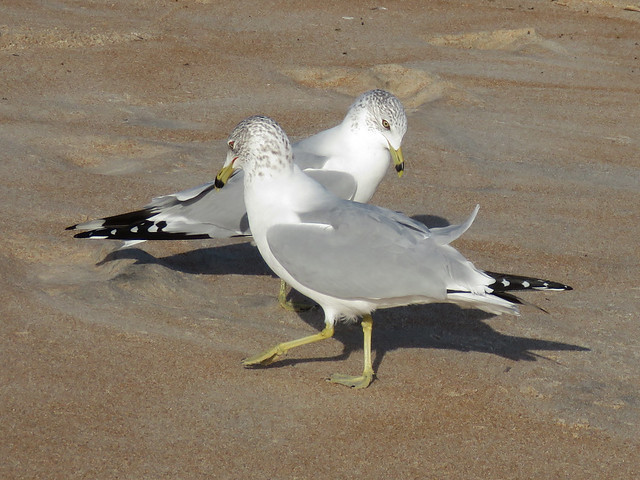
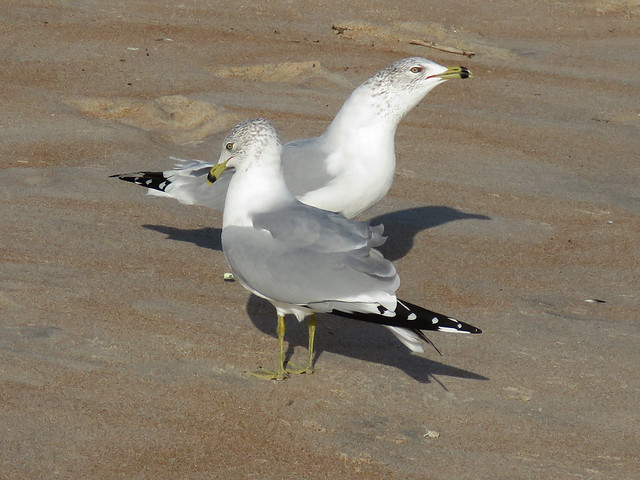

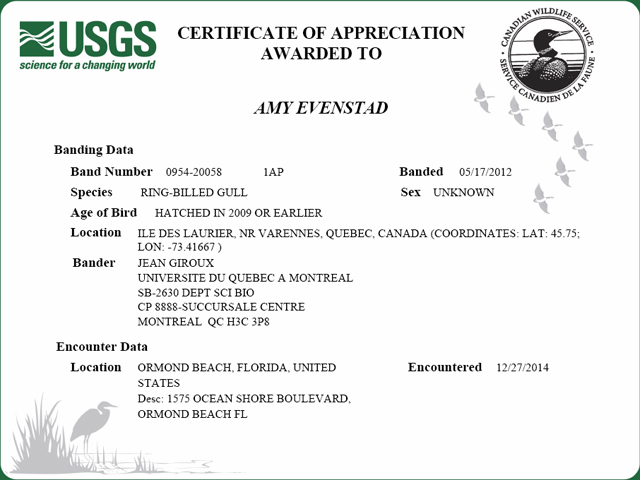
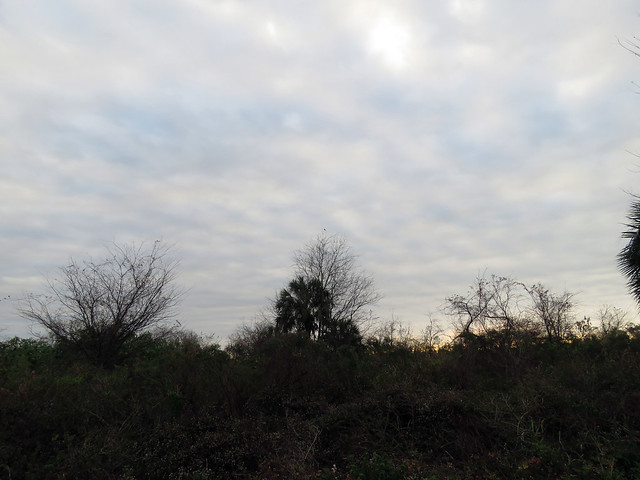

![Bobcat [Lynx rufus]](https://farm8.staticflickr.com/7560/15965969457_938e685af7_z.jpg)



